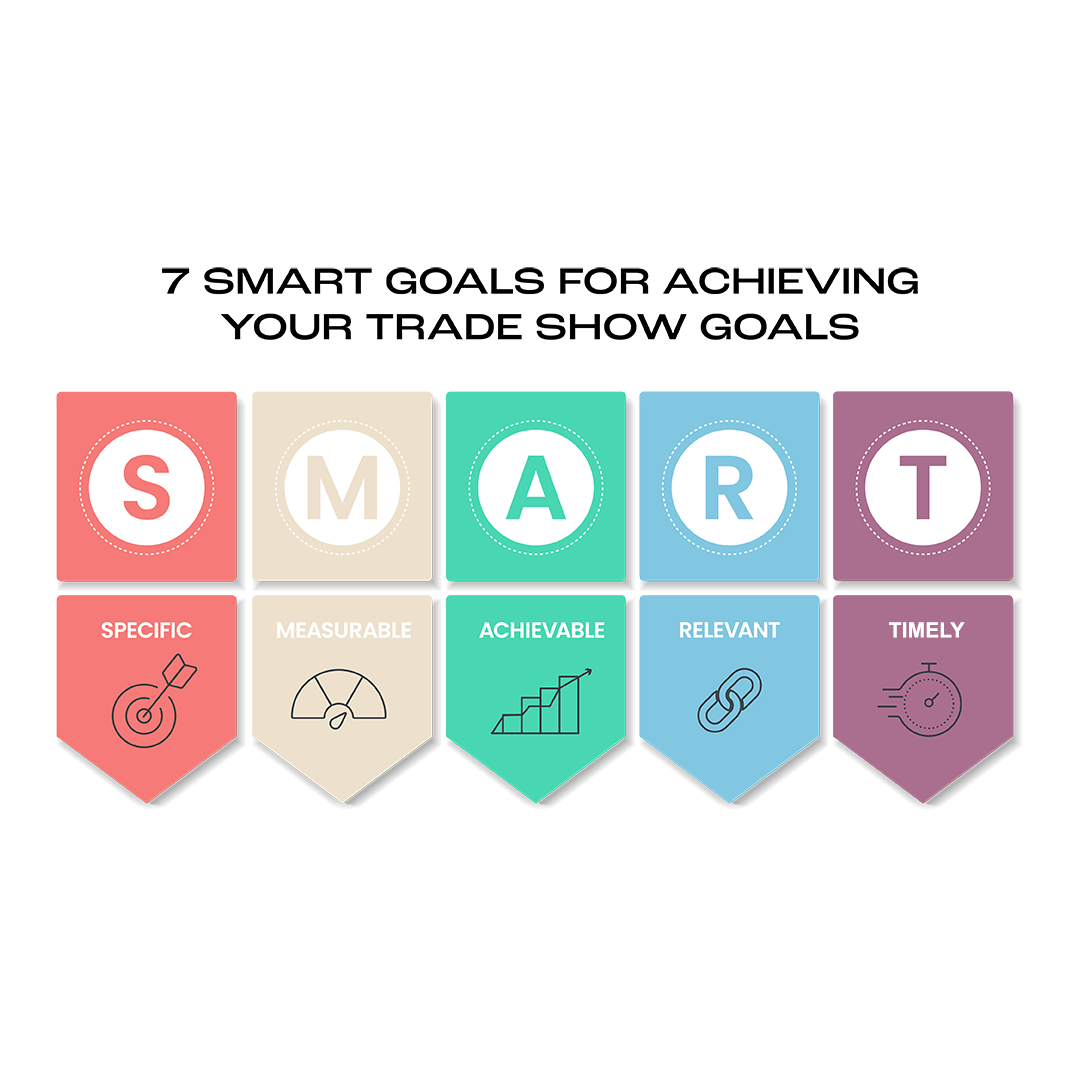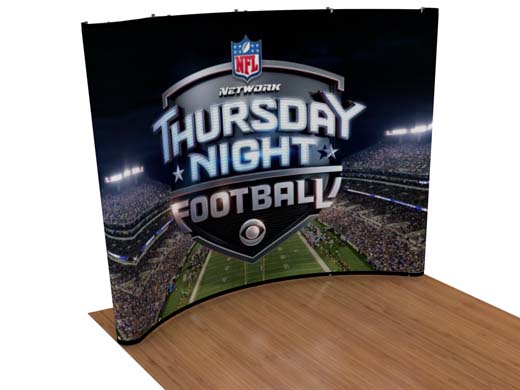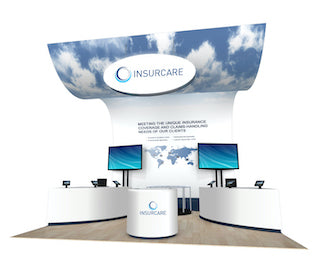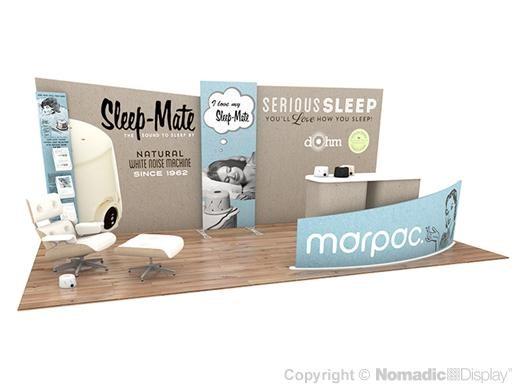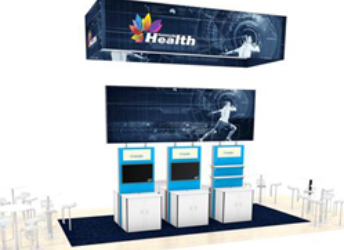Contact us to speak with one of our knowledgeable trade show professionals and receive a FREE DESIGN QUOTE.
Get ready bring your trade show “A” game by setting SMART goals to bring structure and focus to your planning. SMART, which stands for Specific, Measurable, Attainable, Realistic, and Timely, is the ultimate formula for success. Let's dive into seven examples of SMART objectives to master your next trade show.
1. Foot Traffic in Your Exhibit
Set a goal for increased year-over-year foot traffic in your exhibit.
GOAL EXAMPLE:
Increase booth attendance by 30% over previous year.
PRO TIP:
Attract more traffic to your booth using these techniques to make your trade show booth stand out.
2. Introduce New Products and/or Services
The show floor is a chance to demonstrate something that may not be possible using other marketing channels. Attendees don’t always have time to watch a long demonstration, so engage them with excited staff who demonstrate your product/service in a fun, informational and efficient manner.
GOAL EXAMPLE:
Conduct X number of product/service demonstrations per day during the trade show.
PRO TIP:
Ensure buying from you is easy. Double check your credit card processing or order acquisition so buyers can simply buy right then.
3. Capturing Leads
Set a specific goal for the number of qualified leads you hope to capture at the show.
GOAL EXAMPLE:
Schedule 35 sales appointments at the event
PRO TIP:
Ensure your staff is well trained to qualify leads. Quality is more important than quantity because a qualified lead has a much higher chance of becoming a customer, and that’s ultimately the goal.
4. Relationship Building
The whole reason for attending a trade show is quality, face-to-face interactions with existing and prospective customers. Set a goal for the number of sales appointments you want to make and be sure to follow up with them after the show.
GOAL EXAMPLE:
Capture contact information for 10 new vendor prospects during the event and establish relationships within 2-weeks
PRO TIP:
Seating is crucial! If you want to sit down and talk with someone, use lounge or bar furniture for casual conversations and an enclosed meeting space with a conference table and chairs for private meetings. If you don’t have enough space in your exhibit space, most shows offer rooms just off the conventional hall floor that you can rent for meetings such as these.
5. Brand Awareness
One way to identify the impact you made at a trade show is to monitor website traffic during and following the show. The goal is to see a jump in traffic. What kind of jump would you like to see? Twenty percent...thirty percent...fifty percent? Choose a goal and measure your results against it.
GOAL EXAMPLE:
Achieve X number of social media followers or engagement during the trade show by promoting your brand.
PRO TIP:
Consistency is key! Your brand and look must be the same across all marketing platforms – from your lobby to your website and all the way to the show floor. You want someone to walk off the show floor, go to your website, and feel it is simply another extension of who you are.
6. Recruit New Employees
Set a specific goal for the number of prospective employees you hope to capture at the show.
GOAL EXAMPLE:
Capture contact information for 15 new talent/employee prospects during the event
PRO TIP:
Select show staff that are engaged, experienced, and a true reflection of what you are looking for in a potential candidate. Like-minded people will feel an instant connection with your team and organization.
7. Set Return On Investment Goals
Trade shows can be costly, with expenses such as exhibit space rental, travel and accommodation, marketing collateral, and exhibit design and production. Therefore, it is crucial to measure the effectiveness of the exhibit and determine if the investment was worth it.
GOAL EXAMPLES:
- Generate a 20% profit margin for the event (using pre-established ROI metrics)
- Increase sales that come from leads generated at the trade show by 25% compared with last year (within a 6 months sales cycle)
- Generate a 50 percent increase in website traffic within two weeks post-show
Once your objectives have been identified, choose only one or two and focus. It can be tempting to over plan the number of goals, but this will only water down your efforts. Effective programs identify key objectives and gear all efforts towards achieving that goal.
Contact us to speak with one of our knowledgeable trade show professionals and receive a FREE DESIGN QUOTE.


